第41章
The simplest plan which I have found successful is an earthen jar. You may buy them with a cover which screws on with two iron clasps. If you do not find such, a piece of oilskin tied over the mouth is enough. But do not fill the jar full of water; leave about a quarter of the contents in empty air, which the water may absorb, and so keep itself fresh. And any pieces of stone, or oysters, which you send up, hang by a string from the mouth, that they may not hurt tender animals by rolling about the bottom. With these simple precautions, anything which you are likely to find will well endure forty-eight hours of travel.
What if the water fails, after all?
Then Mr. Gosse's artificial sea-water will form a perfect substitute. You may buy the requisite salts (for there are more salts than "salt" in sea-water) from any chemist to whom Mr. Gosse has entrusted his discovery, and, according to his directions, make sea-water for yourselfOne more hint before we part. If, after all, you are not going down to the sea-side this year, and have no opportunities of testing "the wonders of the shore," you may still study Natural History in your own drawing-room, by looking a little into "thewonders of the pond."I am not jesting; a fresh-water aquarium, though by no means as beautiful as a salt-water one, is even more easily established. A glass jar, floored with two or three inches of pond-mud (which should be covered with fine gravel to prevent the mud washing up); a specimen of each of two water-plants which you may buy now at any good shop in Covent Garden, Vallisneria spiralis (which is said to give to the Canvas- backed duck of America its peculiar richness of flavour), and Anacharis alsinastrum, that magical weed which, lately introduced from Canada among timber, has multiplied, self- sown, to so prodigious an extent, that it bid fair, a few years since, to choke the navigation not only of our canals and fen- rivers, but of the Thames itself: (34) or, in default of these, some of the more delicate pond-weeds; such as Callitriche, Potamogeton pusillum, and, best of all, perhaps, the beautiful Water- Milfoil (Myriophyllium), whose comb-like leaves are the haunts of numberless rare and curious animalcules:- these (in themselves, from the transparency of their circulation, interesting microscopic objects) for oxygen-breeding vegetables; and for animals, the pickings of any pond; a minnow or two, an eft; a few of the delicate pond-snails (unless they devour your plants too rapidly): water-beetles, of activity inconceivable, and that wondrous bug the Notonecta, who lies on his back all day, rowing about his boat-shaped body, with one long pair of oars, in search of animalcules, and the moment the lights are out, turns head over heels, rights himself, and opening a pair of handsome wings, starts to fly about the dark room in company with his friend the water- beetle, and (I suspect) catch flies; and then slips back demurely into thewater with the first streak of dawn. But perhaps the most interesting of all the tribes of the Naiads, - (in default, of course, of those semi-human nymphs with which our Teutonic forefathers, like the Greeks, peopled each "sacred fountain,") - are the little "water-crickets," which may be found running under the pebbles, or burrowing in little galleries in the banks: and those "caddises," which crawl on the bottom in the stiller waters, enclosed, all save the head and legs, in a tube of sand or pebbles, shells or sticks, green or dead weeds, often arranged with quaint symmetry, or of very graceful shape. Their aspect in this state may be somewhat uninviting, but they compensate for their youthful ugliness by the strangeness of their transformations, and often by the delicate beauty of the perfect insects, as the "caddises," rising to the surface, become flying Phryganeae (caperers and sand- flies), generally of various shades of fawn-colour; and the water- crickets (though an unscientific eye may be able to discern but little difference in them in the "larva," or imperfect state) change into flies of the most various shapes; - one, perhaps, into the great sluggish olive "Stone-fly" (Perla bicaudata); another into the delicate lemon-coloured "Yellow Sally" (Chrysoperla viridis); another into the dark chocolate "Alder" (Sialis lutaria): and the majority into duns and drakes (Ephemerae); whose grace of form, and delicacy of colour, give them a right to rank among themost exquisite of God'screations, from the tiny "Spinners" (Ba 塼 is or Chloron) of incandescentglass, with gorgeous rainbow-coloured eyes, to the great Green Drake (Ephemera vulgata), known to all fishermen as the prince of trout-flies. These animals, their habits, their miraculous transformations, might give many an hour's quiet amusement to an invalid, laid on a sofa, or imprisoned in a sick-room, and debarred from reading, unless by some such means, any page of that great green book outside, whose pen is the finger of God, whose covers are the fire kingdoms and the star kingdoms, and its leaves the heather-bells, and the polypes of the sea, and the gnats above the summer stream.